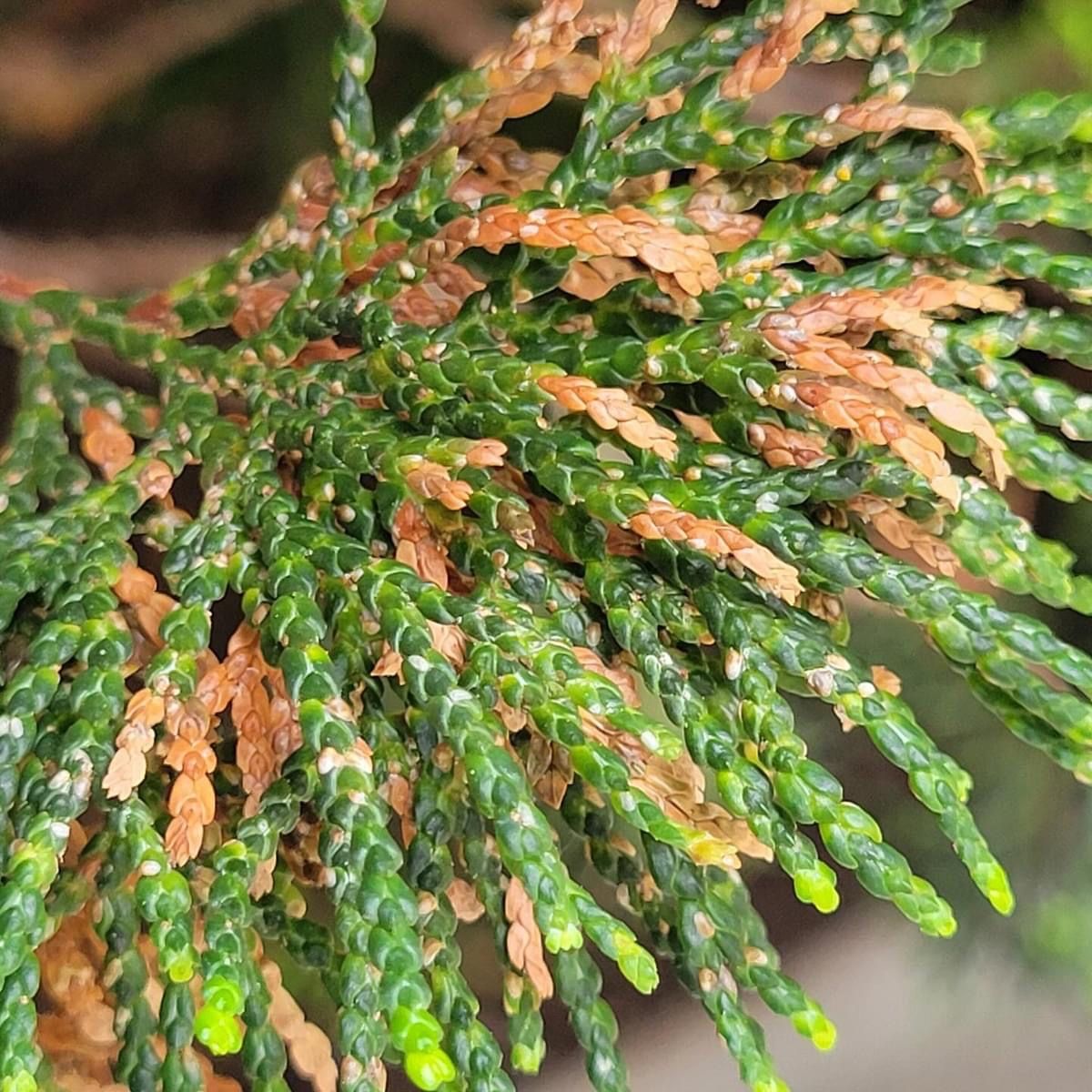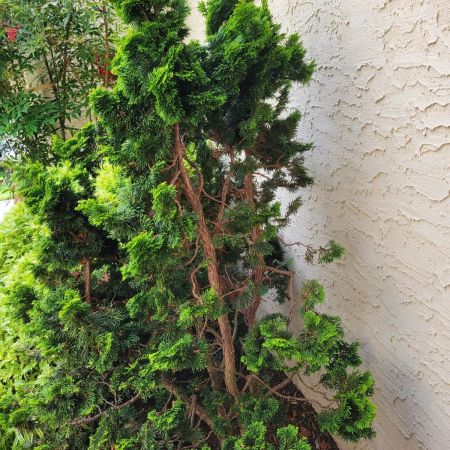Juniper Scale
Juniper scale insects threaten the health and aesthetic appeal of various juniper and coniferous plant species. When left unchecked, these pests can cause a multitude of negative effects, including foliage discoloration, reduced vigor, and plant death. Burkholder Plant Health Care’s expert tree specialists discuss this pest’s appearance, the damage they cause, their preferred host plants, and effective treatment strategies.
Description and Identification
The adult female Juniper scale is small, roughly 1/16 to 1/8 inch long, and has a distinct round shape. Its coloration varies depending on its maturation stage, ranging from light yellow to brown. Males reach only about 1/16 inch in length, and have a more elongated shape—their color ranges from white to pale yellow.
Juniper Scale Life Cycle
The life cycle begins with overwintering females, small, immobile insects that attach themselves to the foliage of juniper plants during the winter months. These females lay eggs during late April through mid-May, which hatch into tiny mobile crawlers. During the crawler stage, the pests feed on the plant sap, damaging juniper trees by depriving them of essential nutrients.
Crawlers then molt several times before transitioning into the stationary phase. During this life stage, known as the second nymphal stage, the crawlers settle on the branches and develop a protective covering called a scale. This armored scale acts as a shield and protects the insects against natural enemies and control efforts.
The scale insects remain in this stationary stage and feed for an extended period. Eventually, the mature females lay eggs underneath their protective scale covering. This cycle then repeats itself, expanding the infestation and causing further damage to juniper trees.

Symptoms of Juniper Scale
One of the first signs of juniper scale infestation is the browning of the needles. Initially, the infected foliage may appear yellow or bronze, gradually turning brown as the infestation progresses. This discoloration is a clear indication of the plant’s declining health.
Damage to Plants
In severe cases, twig and branch dieback and premature needle drop can occur. If left untreated, juniper scale infestation may eventually lead to the death of the host plant.
Host Plants
Host plants for juniper scales primarily include trees and shrubs in the family Cupressaceae. These include:
- Junipers (Juniperus)
- Cypresses (Cupressus)
- Arborvitae (Thuja)
- Oriental arborvitae (Platycladus)
- False cypress (Chamaecyparis)
- Incense cedar (Calocedrus decurrens)
Juniper scales can also infest coniferous trees such as Atlas and Lebanese cedar, spruces, pines (Pinus species), and yews.

Non-Pesticide Methods for Managing Scale Insects on Juniper Plants
Non-pesticide methods are highly effective for managing scale insects on juniper plants. These methods promote plant health and utilize natural enemies to control infestations. With proper care, well-tended, healthy plants can tolerate light populations of scale insects without needing outside control.
One strategy is to introduce the presence of scale insects’ natural enemies. Ladybird beetles and parasitic wasps are examples of these beneficial insects. These insects prey on juniper scale and help control their populations naturally.
Another approach is to remove scale insects manually. A plant health care expert will gently scrape them off the plant with a soft brush or kill them manually.
Pruning and destroying heavily infested branches is another non-chemical management option. Removing highly infested areas can prevent the spread of scale insects to other parts of the plant or other plants.
As noted, when scale infestations are small, keeping infested plants healthy can be enough to allow natural enemies to keep the scales in check. If trees are stressed (e.g., due to being recently transplanted or drought), reducing stress through adequate watering or other mitigation efforts can help keep scale populations from growing. Regular inspections and care by plant health care professionals can protect your high-value plants and trees.
Pesticides Methods for Managing Scale Insects on Juniper Plants
Pesticides can effectively manage Juniper scale insects, but their use should take into consideration potential harm to biodiversity, soil health, and natural pest control. Improper use of this method can harm beneficial wildlife and disrupt soil microbiota, affecting nutrient cycling and fertility. Careful use is needed to avoid harm to natural predators and parasites. Integrated Pest Management (IPM) emphasizes alternative, less harmful methods to minimize pesticide reliance.
Contact Burkholder PHC for Juniper Scale Pest Management
If you discover juniper scale insects in your landscape, contact the experts at Burkholder Plant Health Care. Our seasoned professionals have extensive horticultural and pest management knowledge that can help ensure the long-term health of the plants and trees in your landscape. Contact us for a free evaluation and learn about our tailored treatment plans for scale insects and other threats.

